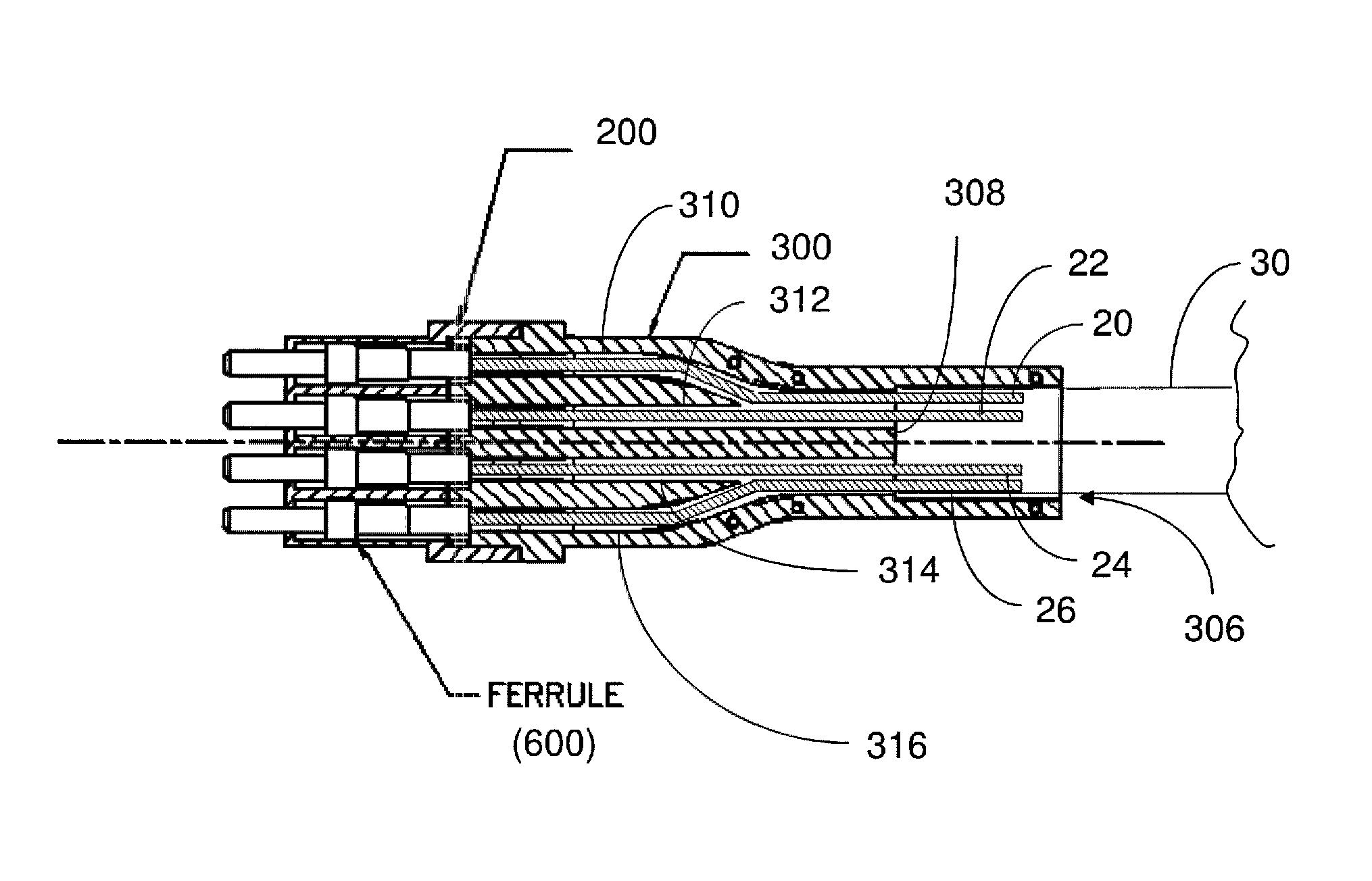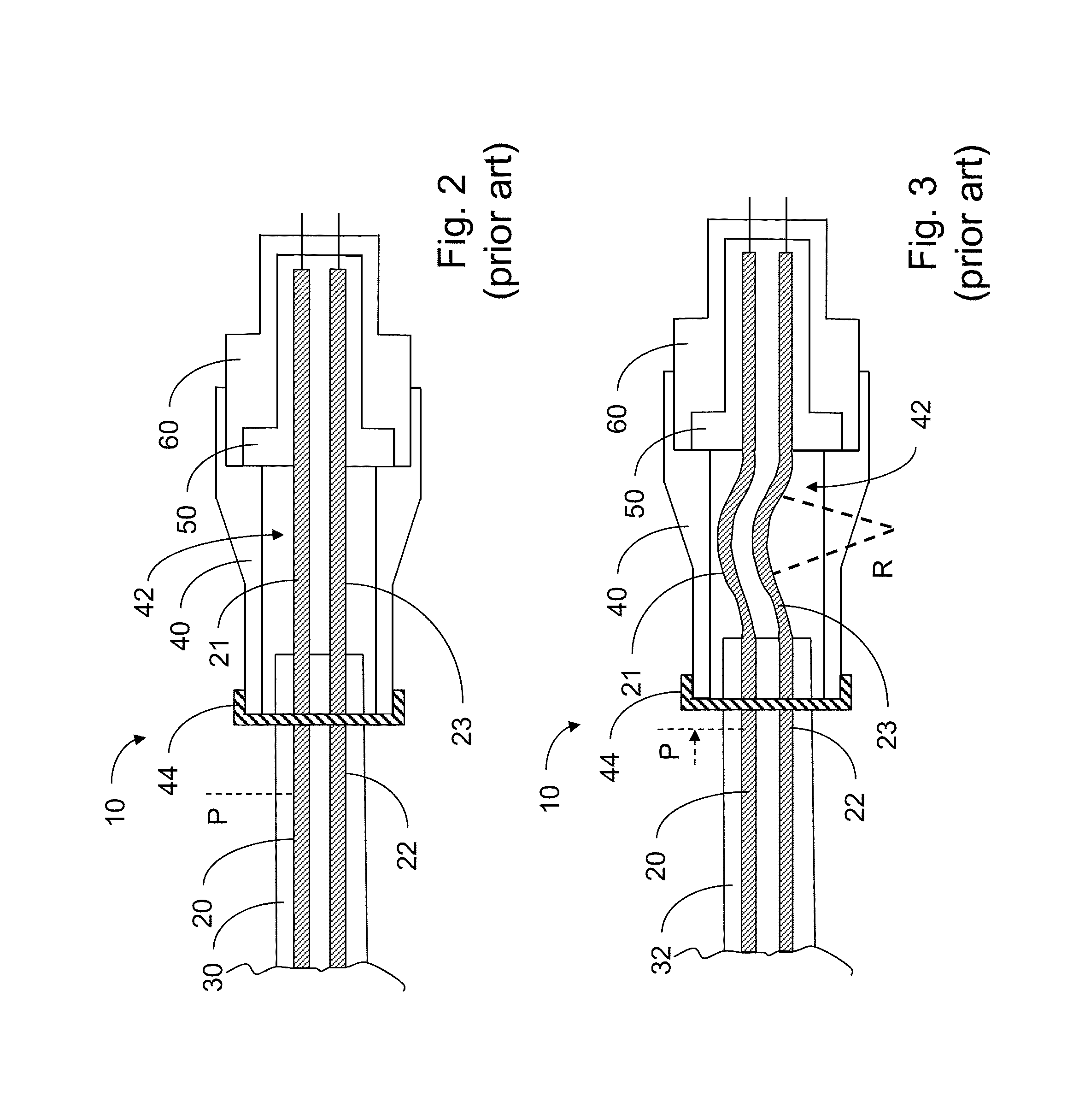Optical connector assembly
a technology of optical fiber cable and assembly, which is applied in the direction of optical elements, manufacturing tools, instruments, etc., can solve the problems of increasing signal attenuation and increasing the attenuation due to bending, and achieve the effect of increasing the signal attenuation and improving the attenuation of the optical fiber cable assembly
- Summary
- Abstract
- Description
- Claims
- Application Information
AI Technical Summary
Benefits of technology
Problems solved by technology
Method used
Image
Examples
Embodiment Construction
[0032]Optical fiber connections are often placed outdoors and, accordingly, experience wide variations in temperature over the course of their lifetime. The inventors have recognized an appreciated that operation of an optical fiber cable assembly in an environment subject to temperature variations can be improved through incorporation of a support member in a connector terminating the cable assembly. A member, appropriately shaped and positioned within a connector, supporting exposed fibers may reduce attenuation in the cable assembly.
[0033]Though not being bound by any particular theory of operation, the inventors believe that such a support member may reduce macrobending, and therefore attenuation, in optical fibers that extend from the protective jacket of the cable to be terminated within a housing of the connector. Such macrobending might otherwise result from different temperature outer jacket of an optical cable experiences shrinkage by a greater amount than the optical fibe...
PUM
| Property | Measurement | Unit |
|---|---|---|
| diameter | aaaaa | aaaaa |
| bend radius | aaaaa | aaaaa |
| diameter | aaaaa | aaaaa |
Abstract
Description
Claims
Application Information
 Login to View More
Login to View More - R&D
- Intellectual Property
- Life Sciences
- Materials
- Tech Scout
- Unparalleled Data Quality
- Higher Quality Content
- 60% Fewer Hallucinations
Browse by: Latest US Patents, China's latest patents, Technical Efficacy Thesaurus, Application Domain, Technology Topic, Popular Technical Reports.
© 2025 PatSnap. All rights reserved.Legal|Privacy policy|Modern Slavery Act Transparency Statement|Sitemap|About US| Contact US: help@patsnap.com



